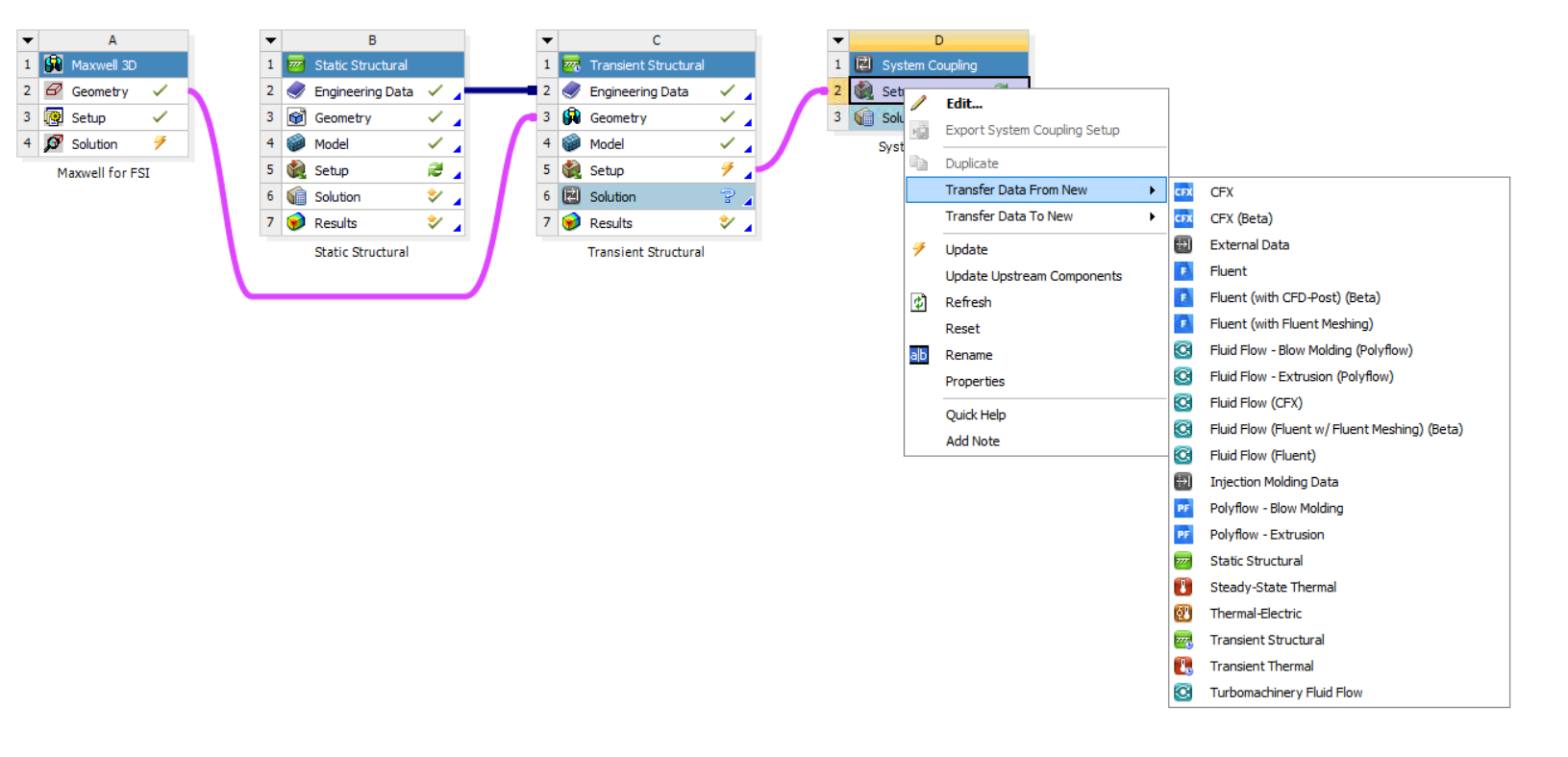TAGGED: coupled-simulation, electrostatics, maxwell, mems, system-coupling
-
-
June 2, 2021 at 7:12 pm
Yasmine
SubscriberDear all,
I am new to Ansys workbench and Maxwell. Can I please ask for help with electrostatic pull-in simulation for MEMS switch in the workbench? Because my structure has to use floating potential condition, Maxwell is the best option for me so far. Please let me know if I can apply this boundary condition in APDL ? (I have read both "Coupled-field analysis guide" and "MEMS Multiphysics simulation in Ansys workbench " tutorial, but nothing about floating potential condition there).
I can get deflection results from my simulation by using Maxwell and static structural analysis systems. However, my structure cannot simulate pull-in/collapse states. I have been told to use a two-way interaction method, like FSI (fluid structure interaction) tutorial, to transfer data between Maxwell and Transient structural in order to have "snaps down" mode. However, there is a Maxwell system coupling issue since my solution type for Maxwell is electrostatic. I believe that system coupling has limited support for Maxwell as shown in the following picture (not able to connect system coupling setup cell to Maxwell).
June 3, 2021 at 1:06 pmKarthik Remella
AdministratorHello Please take a look at this tutorial that uses System Coupling between Steady State Maxwell & Transient Mechanical (thermal). Please see if this answers your question.
https://ansyshelp.ansys.com/account/secured?returnurl=/Views/Secured/corp/v211/en/sysc_tut/sysc_tut_coilcore_mech.html
Karthik
June 16, 2021 at 3:01 amYasmine
SubscriberDear Karthik Thanks for your help! I have tried to follow the attached tutorial, but I am now facing one problem.
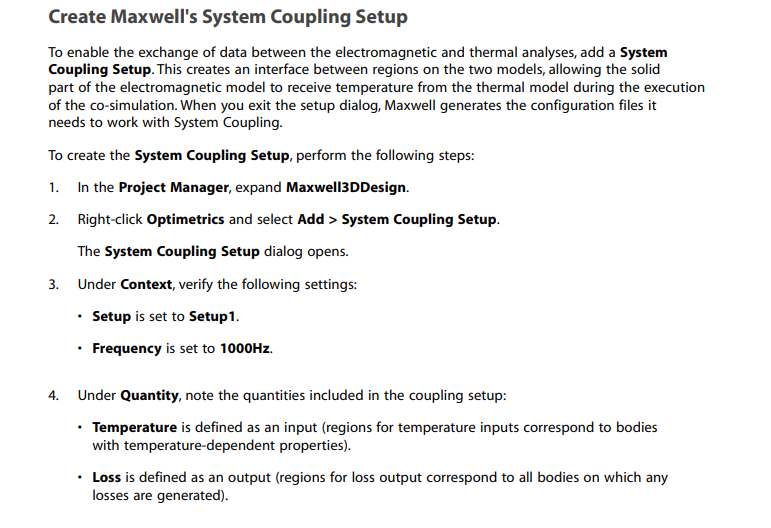 I could not find System Coupling Setup option after clicking Optimetrics. I have found that Maxwell does not support system coupling for some Solution Types, such as Electrostatic (which I am currently using). It seems to be a dead end to me to use system coupling method to simulate electrostatic pull-in/collapse states while applying floating potential boundary condition for MEMS structures.
I could not find System Coupling Setup option after clicking Optimetrics. I have found that Maxwell does not support system coupling for some Solution Types, such as Electrostatic (which I am currently using). It seems to be a dead end to me to use system coupling method to simulate electrostatic pull-in/collapse states while applying floating potential boundary condition for MEMS structures.
I was wondering if you could please give me some other ideas to solve this "pull-in" question?
Thank you!
June 16, 2021 at 12:04 pmKarthik Remella
AdministratorHi Could you please share a screenshot of your WB set-up and connections? Could you also share a screenshot of optimetrics in Maxwell?
I'm surprised that System Coupling option does not show up for you.
Karthik
June 17, 2021 at 6:11 pmYasmine
SubscriberDear Karthik Yes, I have attached screenshots below. This is my currently WB connections. I want to connect Maxwell 3D to System Coupling.
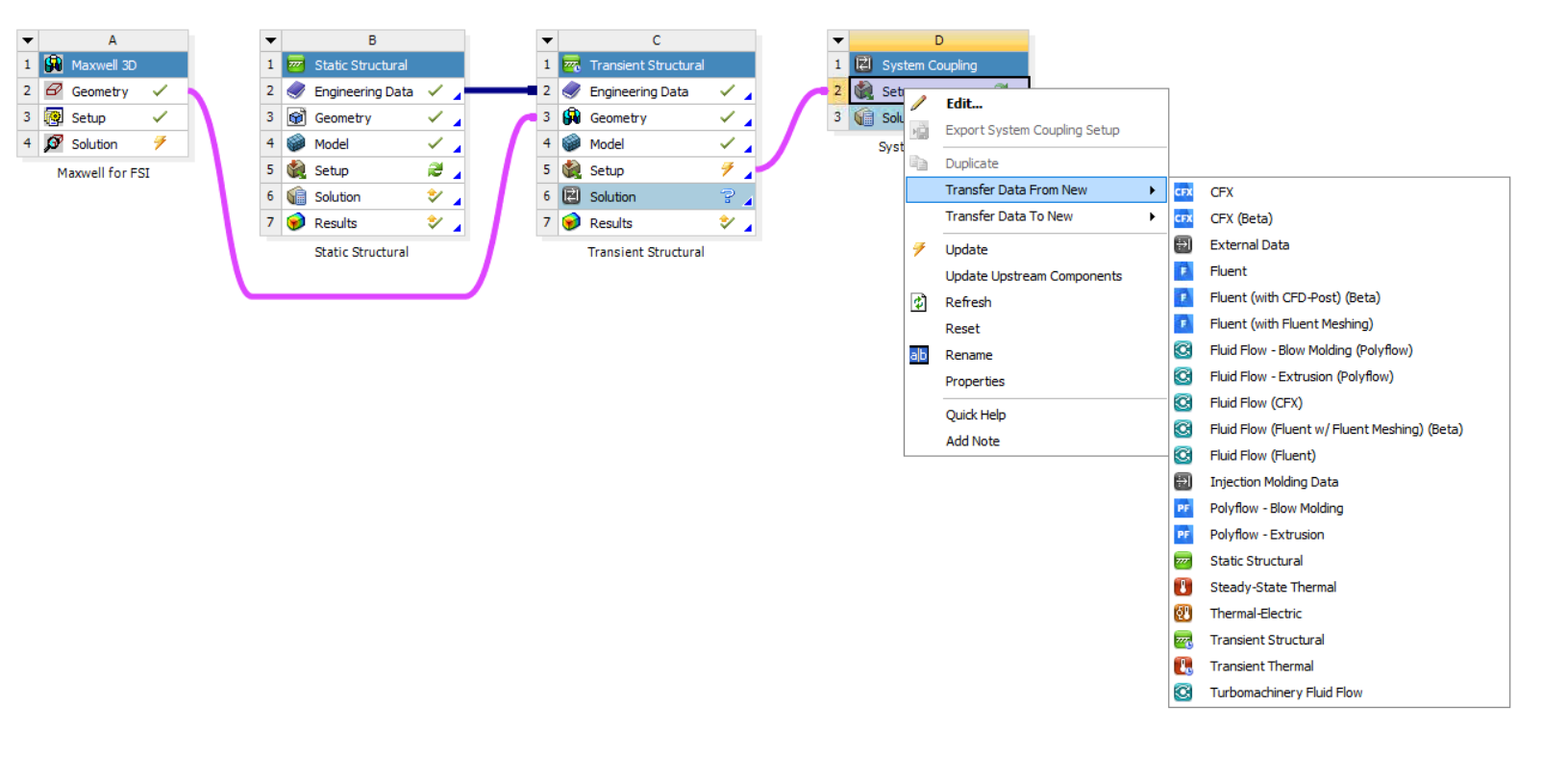 I have tried to use different Maxwell Solution Type's (both Electrostatic and Eddy Current). As shown below, I can find System Coupling Setup in EddyCurrent, but not in Electrostatic.
I have tried to use different Maxwell Solution Type's (both Electrostatic and Eddy Current). As shown below, I can find System Coupling Setup in EddyCurrent, but not in Electrostatic.
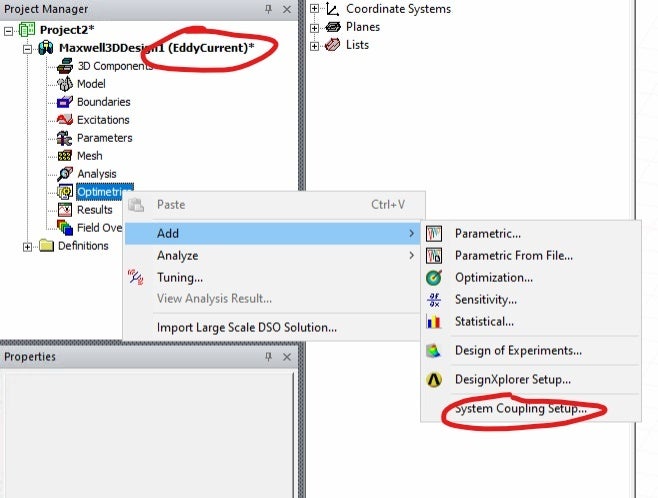
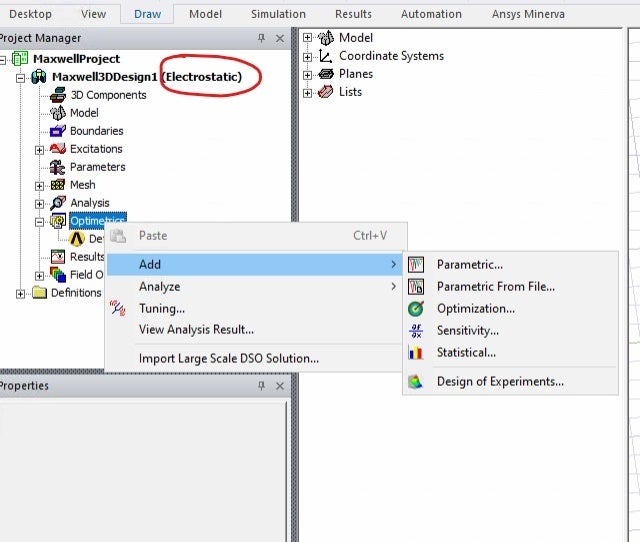 Thank you!
Thank you!
Viewing 4 reply threads- The topic ‘Electrostatic pull-in/collapse states for MEMS structure’ is closed to new replies.
Ansys Innovation SpaceTrending discussions- Y wiring method and the start and end points of winding.
- Lumped Port Deembed
- Optimizing Via Impedance in Ansys HFSS 3D Layout Using Geometric Parameter Sweep
- HFSS libnvidia-ml.so too old or could not be found – Warning in slurm job output
- Hfss 3D pcb via capped and filled with epoxy
- AEDT Natural Convection with default correlation is failing solver initializatio
- STL Import Errors in HFSS After Cleaning in SpaceClaim
- Three-Phase Voltage Imbalances in dual stator electric generator
- Calc Error in Field Calculator after PyAEDT Analyze
- import file autocad 3d
Top Contributors-
3912
-
1414
-
1256
-
1118
-
1015
Top Rated Tags© 2025 Copyright ANSYS, Inc. All rights reserved.
Ansys does not support the usage of unauthorized Ansys software. Please visit www.ansys.com to obtain an official distribution.
-

